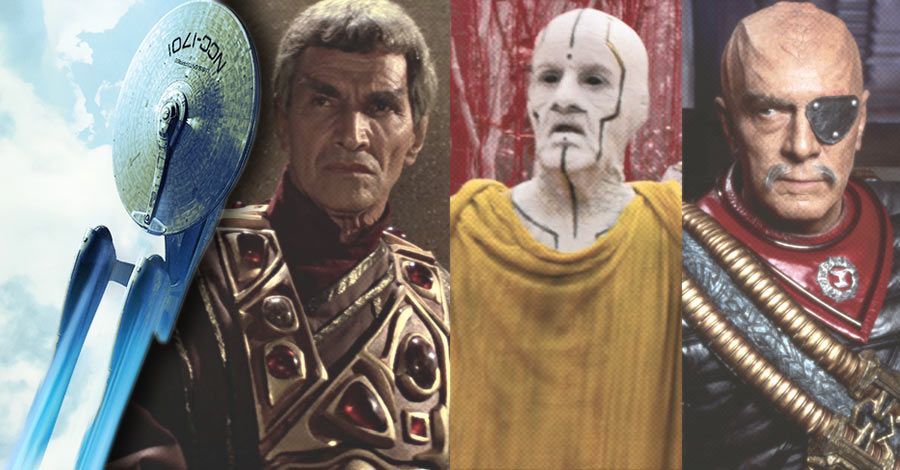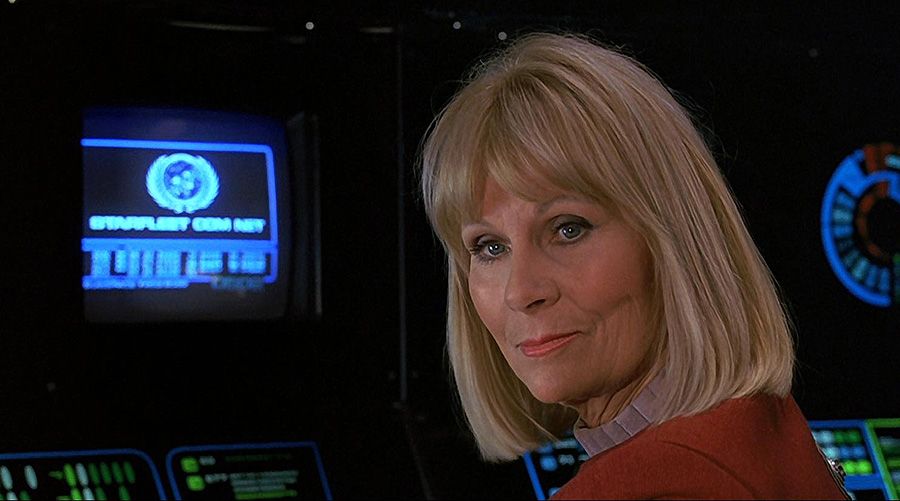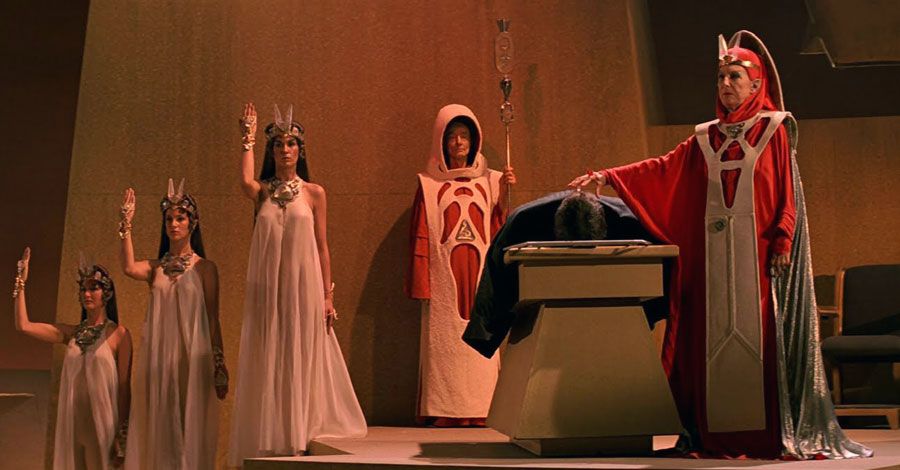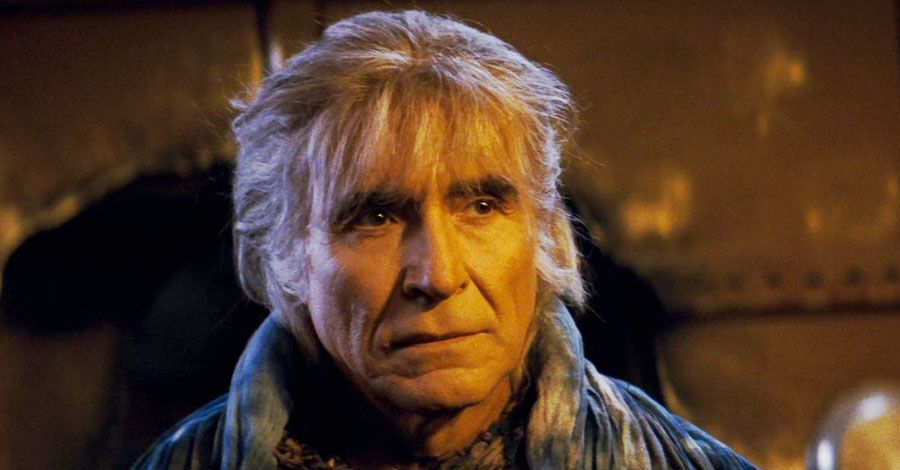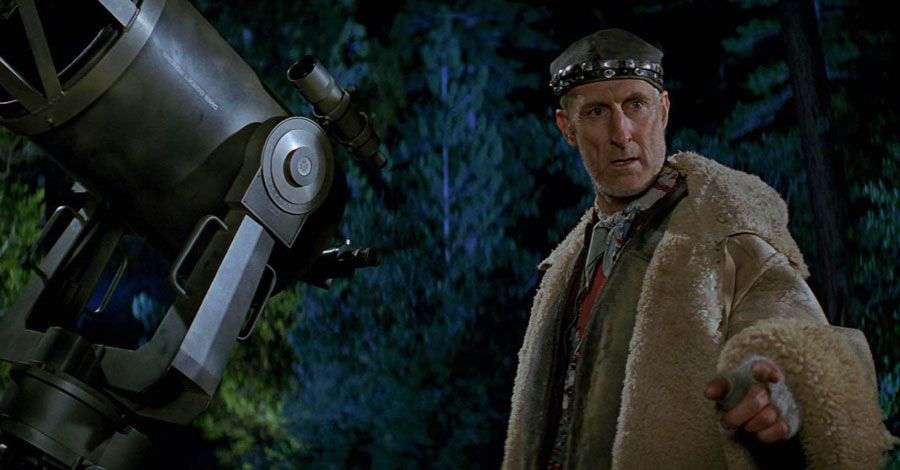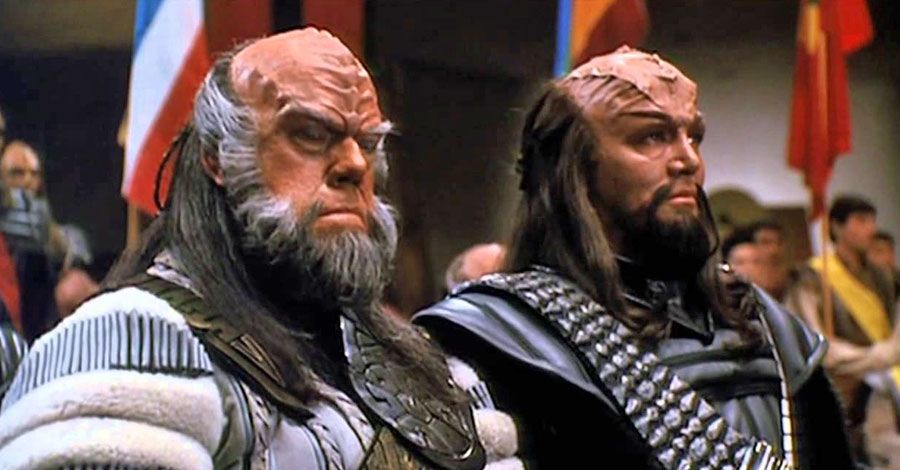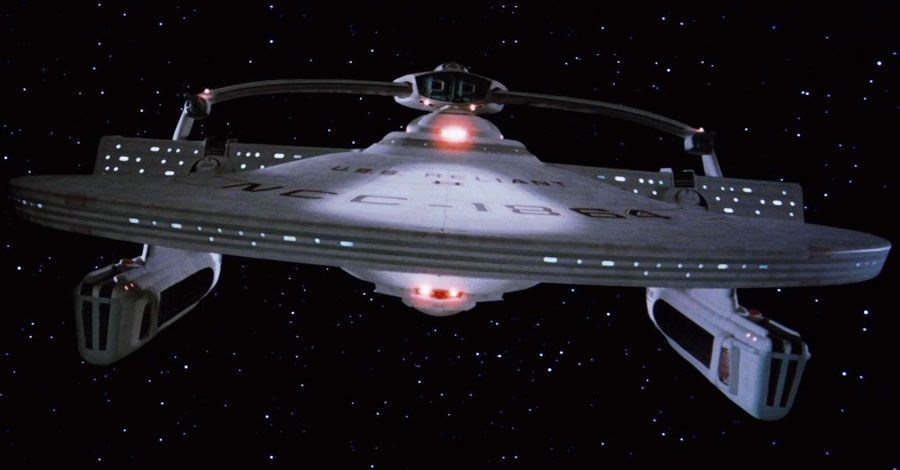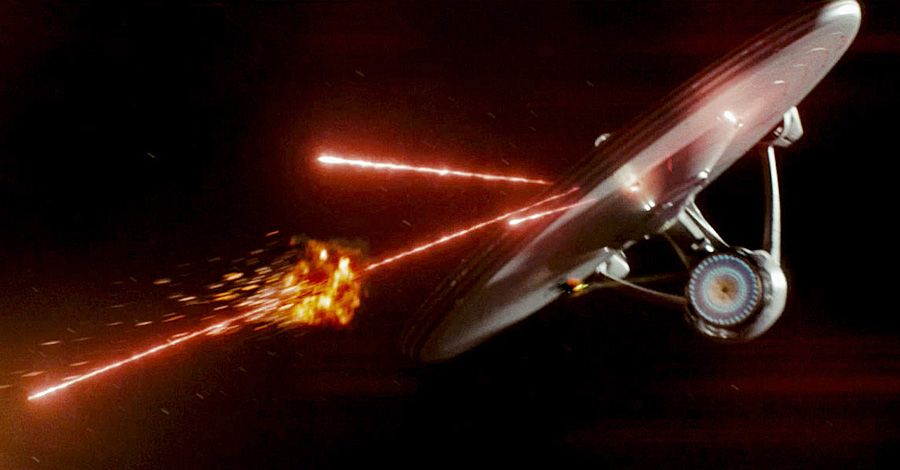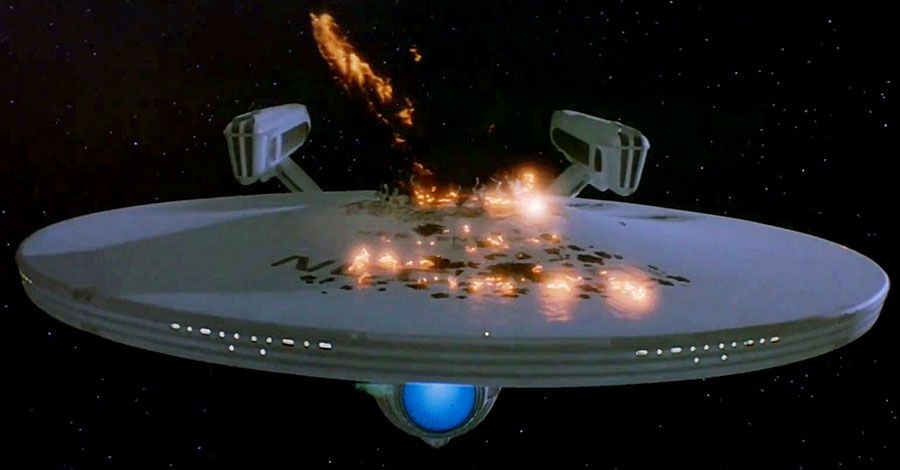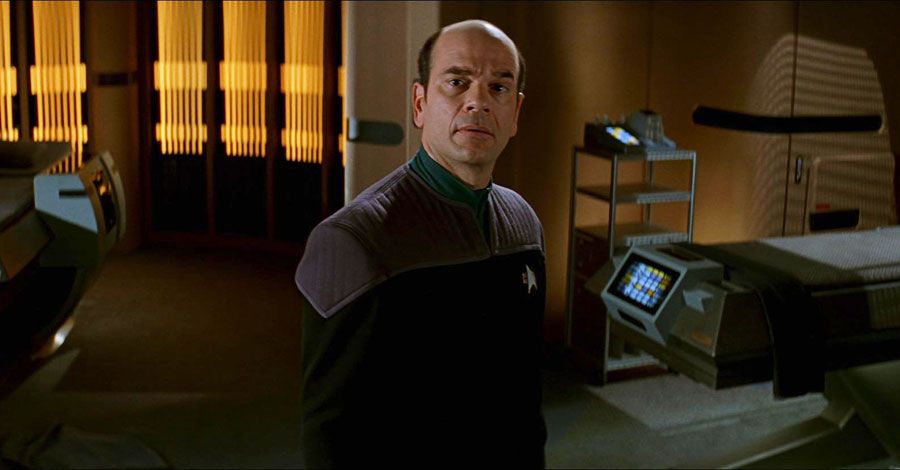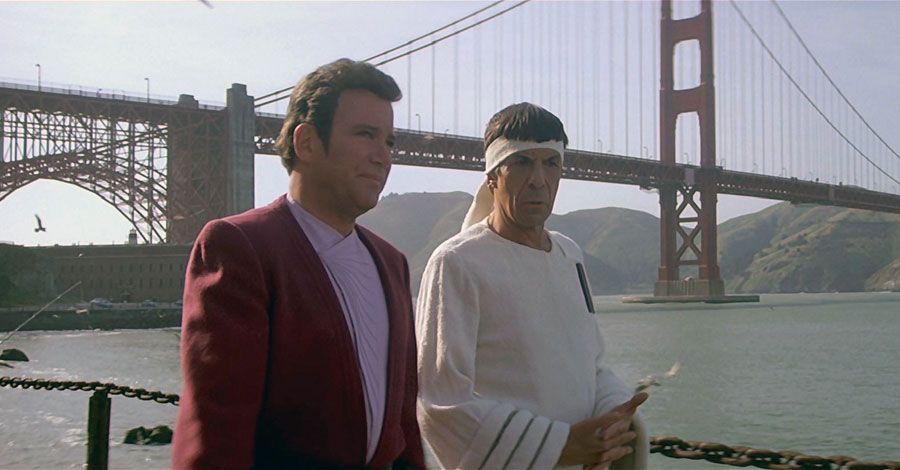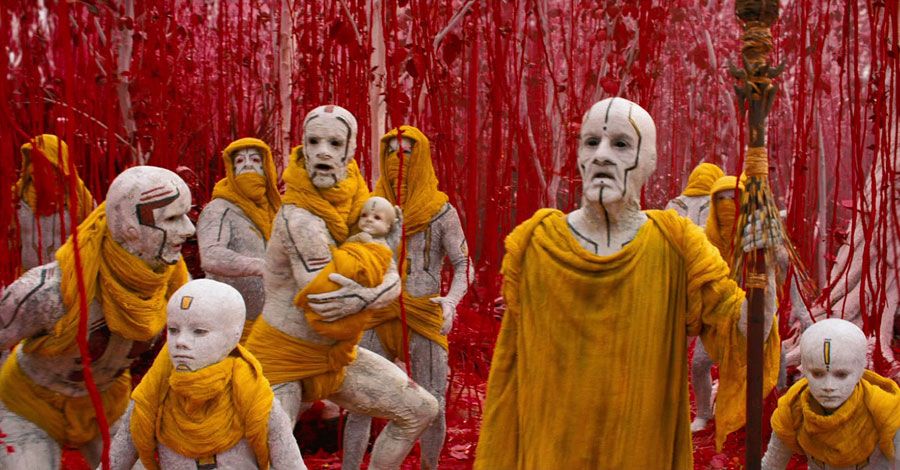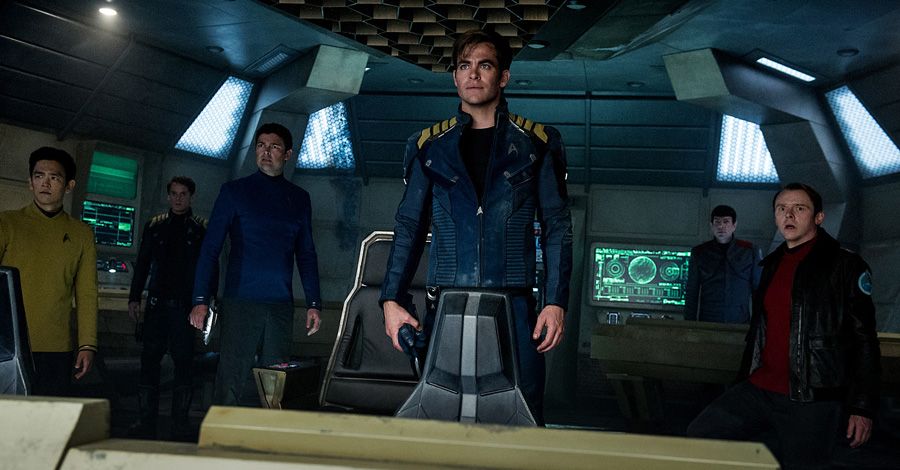Some film series display their common elements proudly: "Star Wars" emphasizes dogfights, lightsaber duels and familial intrigue, while the James Bond movies include high-speed chases, exotic locales, mixed drinks and adult situations. The "Star Trek" films fall somewhere in between, neither one continuous saga nor a collection of loosely related adventures. Their commonalities are more statistical than symbolic.
Regardless, half of the 12 previous "Star Trek" movies premiered at a time when each was the only voyage of the starship Enterprise. Thus, in order to keep audiences satisfied for (potentially) the next few years, the movies have tended to fall back on some recurring themes. In this regard "Star Trek Beyond" double-dips: Not only is it the 13th film in the series, it coincides with the franchie's 50th anniversary.
Ahead of "Beyond's" July 22 opening, we look back at what its predecessors have in common, and speculate on whether the new film will follow suit. This isn't really a list of Easter eggs (because goodness knows there are enough of those), but a look at more obvious connections.
Spoilers follow for movies you've probably already seen at least a few times. The discussions of "Beyond" draw mostly from trailers and TV spots, so there shouldn't be any major plot revelations there.
12 Familiar Faces
The original TV series featured a couple of recurring crew members. Although Yeoman Janice Rand (Grace Lee Whitney) left early in the first season, she appeared in eight episodes, including significant roles in "Charlie X," "The Enemy Within" and "Miri." Nurse Christine Chapel (Majel Barrett) appeared in 25 episodes throughout the series' run, among them "The Naked Time," "What Are Little Girls Made Of?", "Amok Time," "Journey to Babel," "The Tholian Web" and "Plato's Stepchildren."
Both characters returned for 1979's "Star Trek: The Motion Picture" and 1986's "Star Trek IV: The Voyage Home." Rand also had a cameo in 1984's "Star Trek III: The Search For Spock" (or at least Whitney did) and was Excelsior's communications officer in 1991's "Star Trek VI: The Undiscovered Country." Additionally, Mr. Kyle, the British transporter chief played by John Winston in four original-series episodes, showed up running communications aboard the Reliant in 1982's "Star Trek II: The Wrath of Khan."
RELATED: Ranking Every "Star Trek" Movie, From Worst to Best
When not playing Chapel, Majel Barrett stayed busy both as the voice of various starships' computers and as "The Next Generation's" Lwaxana Troi. Neither Rand nor Chapel has been seen in the new "Kelvin" timeline, although Chapel was mentioned in both films.
By contrast, while the Next Gen movies didn't use much of the Enterprise-D's deeper bench of junior officers, Nurse Ogawa popped up in 1994's "Star Trek Generations" and 1996's "Star Trek: First Contact," and Lieutenant Barclay appeared in the latter. Also, ship's bartender Guinan (Whoopi Goldberg) appeared in "Generations" and cameoed in 2002's "Nemesis" alongside Wesley Crusher (Wil Wheaton).
Spock's father Sarek appeared only in two original-series episodes, one live-action ("Journey to Babel") and one animated ("Yesteryear"), but actor Mark Lenard also played a Romulan starship commander in "Balance of Terror" and a Klingon captain in "The Motion Picture." He returned as Sarek in four movies, starting with "The Search For Spock" (although he only voiced two words in 1989's "Star Trek V: The Final Frontier"). Ben Cross played Sarek in 2009's "Star Trek." As for Spock's mother, Amanda Grayson (Jane Wyatt) appeared in "Journey to Babel" and "The Voyage Home." Winona Ryder played her in the 2009 reboot, but she didn't survive Vulcan's destruction.
The Kelvin timeline has developed one recurring junior officer, security's Lt. Herndorff (Jason Matthew Smith), aka "Cupcake." First seen pummeling his future captain in "Star Trek's" Iowa bar fight, Herndorff's character is the Kelvin counterpart of a security officer killed in the episode "The Apple." Indeed, Herndorff was supposed to die in 2013's "Star Trek Into Darkness," but instead will appear in "Beyond."
11 Vulcan Lore
Speaking of Sarek, the movies expanded the series' looks into Vulcan culture. When the films visited the planet itself, "The Motion Picgture" gave audiences the Kolinahr ritual (designed to purge all remaining emotions), while "Search For Spock" depicted the Fal-Tor-Pan (reuniting soul and body) and "Voyage Home" showed Spock's mental retraining.
Otherwise, Sybok offered a different perspective on Vulcans in "Final Frontier"; and "First Contact" revealed the first meeting between humans and Vulcans (including Sarek's grandfather Solkar). J.J. Abrams' "Star Trek" gave audiences an all-too-brief look at the Kelvin timeline's version of the planet, including the Hall of Ancient Thought, and featured Spock's Vulcan-designed "Jellyfish" starship. Finally, Spock's quarters in "Wrath of Khan" and "Search For Spock" featured a large piece of wall art symbolizing the Vulcan philosophy of Infinite Diversity in Infinite Combinations.
10 Recycling
As one might expect for a film series with television roots, several "Trek" movies followed up on the events of various episodes. While "Wrath of Khan" is the most obvious, "The Search For Spock" implemented the Enterprise self-destruct sequence from "Let That Be Your Last Battlefield," and "The Voyage Home" used the time-travel maneuver from "Tomorrow Is Yesterday." For that matter, movies II-IV formed the "Genesis Trilogy," collectively taking the crew from Starfleet Academy instructors back to their usual role as explorers.
(Sometimes the movies were indifferent to what the series had established. The episode "Errand of Mercy" set up the cold war between the Federation and Klingon Empire, but "Star Trek VI: The Undiscovered Country" never referred back to it. On the other hand, "The Motion Picture" is infamous for rather indifferently copying its NASA-probe-makes-good plot from the episode "The Changeling.")
The Next Gen movies also built upon television plot threads. A few years after fomenting a Klingon civil war, the Duras sisters were causing trouble in "Generations." "First Contact" then flashed back to "The Best of Both Worlds" and put a new spin on warp-drive inventor Zefram Cochrane, introduced in the Original Series episode "Metamorphosis."
In addition to their use of "The Cage's" Christopher Pike, the first two Kelvin-timeline movies borrowed extensively from "Wrath of Khan." The second movie reintroduced Carol Marcus and (spoilers!) Khan himself, and riffed on the climactic sacrifice. However, the first movie depicted Kirk's Kobayashi Maru test, had Captain Pike tortured with an ear-invading space bug and repeated (somewhat ironically) some of Spock's dying words.
9 Retcons
Of course, "Wrath of Khan" also included one of "Trek's" most surprising bits of retroactive continuity, namely Kirk's son David Marcus. Similarly, "Generations" revealed Sulu's daughter Demora; "Final Frontier" introduced Spock's libertine half-brother Sybok; "Undiscovered Country" had Worf's grandfather; and "Nemesis" involved not only Picard's clone Shinzon, but a heretofore-unknown Romulan race, the nocturnal Remans.
The Klingons received a fairly significant makeover in "The Motion Picture," going from swarthy marauders in black turtlenecks and shiny tunics to armored heavies with forehead ridges and steely, no-nonsense glares. This was a source of some fan consternation for some 25 years, until a "Star Trek: Enterprise" arc explained the source of the differences. The Borg also got a retcon with "FC's" invention of the Borg Queen, supposedly present for Picard's assimilation in "Best of Both Worlds."
Still, perhaps that movie's portrayal of Zefram Cochrane diverged most dramatically from the canon. While the character was supposedly born in the 2030s and made history in 2063, he was played on TV by the 44-year-old Glenn Corbett and on film by the 56-year-old James Cromwell. Fan theories for the differences include "premature aging" (in "First Contact") from radiation poisoning, and eternal youth (on TV) from a benevolent noncorporeal being; but they just spotlight the differences.
8 Qapla'!
Thanks to Mr. Worf, each "Trek" movie has included at least one Klingon character or starship. Even if you don't count him, nine movies put Klingons in some sort of antagonistic role. This includes all the Kirk-era movies, "Generations," the Kobayashi Maru simulation (and a deleted prison-break scene) in "Star Trek" '09, and fighting Enterprise crewmen and Khan on Qo'Nos in "Into Darkness."
The Romulans got a little less attention, but it wasn't for lack of trying. According to the episode "The Deadly Years," the Gamma Hydra system referenced in "Wrath of Khan's" Kobayashi Maru scenario is apparently closer to the Romulan Neutral Zone; and the Romulans were the villains in early drafts of "Search For Spock." Moreover, Saavik (who appeared in movies II-IV) is supposed to be half-Vulcan and half-Romulan, rescued by Spock from an inhospitable planet.
Regardless, the later movies were full of Romulan references: Romulan diplomats were in "Final Frontier" and "Undiscovered," the crew discovered Romulan corpses in "Generations," patrolled the Neutral Zone early in "First Contact" and visited Romulus in "Nemesis." And renegade Romulans drove the plot of "Star Trek" '09.
7 One Big Happy Fleet
The only Starfleet vessels the TV series showed on screen were the Enterprise and her Constitution-class sisters. While "The Motion Picture" featured a couple of orbiting Starfleet facilities and a few new shuttle designs, "Wrath of Khan" introduced the Reliant, and "Search For Spock" brought us the Excelsior and Grissom.
The next new-ish starship to make its big-screen debut was the Farragut at the end of "Generations," but its Nebula-class design had been seen previously on TV in "The Next Generation." Likewise, "Deep Space Nine's" Defiant was part of the "First Contact" armada.
Meanwhile, the Excelsior cameoed in "Voyage Home" and "Final Frontier" before taking a more prominent role in "Undiscovered Country." The Excelsior model was then re-dressed as the Enterprise-B in "Generations." A few new ship designs fought alongside the new Enterprise-E in "First Contact," and 1998's "Insurrection" showed Data piloting a small scout ship. Naturally, the new ships of the Kelvin-timeline movies have their own take on Starfleet style, including the eponymous Kelvin from "Star Trek" and the monstrous Vengeance from "Into Darkness."
Despite all this potential help, the Enterprise was often the only suitable vessel. It was the only ship in the quadrant and/or the closest available in "The Motion Picture," "Wrath of Khan," "Generations" (the Enterprise-B, that is) and "Nemesis." In "Voyage Home" only the captured Klingon Bird-of-Prey was left to travel through time; in "First Contact" only the Enterprise-E was caught in the Borg Sphere's temporal wake; and thanks to Kirk, in "Stark Trek" '09 only the Enterprise delayed long enough to avoid destruction by Nero's Narada.
In "Search For Spock" and "Insurrection" the Enterprise rode to the rescue of an imperiled shipmate; in "Final Frontier" and "Undiscovered Country" an admiral only wanted Kirk to solve a diplomatic problem; and in "Into Darkness" Kirk volunteered to take the Enterprise after John Harrison. Only in "Generations" did the Enterprise get involved as the result of a routine investigation.
6 Starship Duels
The original series had its share of space combat in episodes like "Balance of Terror," "The Doomsday Machine" and "The Tholian Web," and most of the movies allowed the Enterprise to fire at least one photon torpedo. "Wrath of Khan," "Undiscovered Country," all four Next Gen movies and "Star Trek" '09 boasted significant battle scenes, while "Search For Spock," "Final Frontier" and "Into Darkness" had shorter skirmishes. Only "The Motion Picture" and "Voyage Home" lacked such encounters, although the "Motion Picture" Enterprise did fire its obligatory torpedo at a pesky asteroid. For whatever it's worth, the "Into Darkness" space combat was one-sided, with the Enterprise never returning any of the Vengeance's fire.
That brings us to ...
5 Star Wrecks
Considering that the Enterprise is Starfleet's flagship, it doesn't fare all that well in the movies. In "The Motion Picture" and "The Final Frontier" it leaves port prematurely; in "Wrath of Khan" "The Undiscovered Country," "Nemesis" and "Into Darkness" it takes a pretty good beating; in "Star Trek" '09 and "Insurrection" it has to eject all or part of its warp core to get out of trouble; and in "Search For Spock" and "Generations" it's destroyed outright. The Enterprise-E of "First Contact" gets boarded by the Borg, loses its navigational deflector dish, activates the self-destruct sequence and pops out its lifeboats, but everything ends well. Only in "The Voyage Home" is the Enterprise-A completely unscathed, probably because it's barely in the movie.
For those wondering whether "Beyond" will feature a new Enterprise (assuming the current one proves unsalvageable), precedent isn't much help. In the two previous movies where the Enterprise was destroyed, the successors each arrived in the next installment. However, those installments both came during anniversary years, 1986's "The Voyage Home" and 1996's "First Contact." Because "Beyond" is an anniversary movie, you'd think it could celebrate with a new Enterprise, but either way, the next Kelvin-timeline movie (fingers crossed) seems sure to feature one.
4 These Are Other Crews' Voyages
Again, because "Star Trek Beyond" is part of the 50th-anniversary celebration, one might expect a decent amount of callbacks and Easter eggs referencing the franchise's various forms. Starting with 1989's "The Final Frontier," six movies have been part of that larger franchise, competing for eyeballs with at least one sequel and/or spinoff series. While "The Final Frontier" didn't refer to "The Next Generation" (the only other series around at the time), it picked up the show's production designer Herman Zimmerman, who gave the bridge of the Enterprise-A the same basic color scheme as her 24th-century successor.
Allusions began in earnest with the 25th-anniversary film "The Undiscovered Country," which included the aforementioned Colonel Worf and a not-so-subtle reference to a new crew. "Generations" returned the favor by teaming up Kirk and Picard (and looking in on Scotty, Chekov and Demora Sulu). "First Contact" went all out for the 30th anniversary, featuring cameos from "Deep Space Nine's" Defiant and "Voyager's" Emergency Medical Hologram as part of its Cochrane-centric tale of the Federation's first steps.
The other two Next Gen movies tied more loosely into the franchise's overall fabric, although "Insurrection" had a deleted-scene cameo from "DS9's" Quark, and "Nemesis" featured "Voyager's" newly promoted Admiral Janeway. (One might also count Worf as a "Deep Space Nine" officer in "First Contact" and "Insurrection.") As for the Kelvin films, "Star Trek" '09 mentioned Cardassians and "Into Darkness" invoked Section 31, both generally "DS9" references. Section 31 also became part of the "Enterprise" series, and "Into Darkness" included models of the NX-01 and an earlier warp-ship prototype in Admiral Marcus' office.
3 Voyage Home
Although the crew traveled to the 20th century in a handful of episodes, the original series depicted 23rd-century Earth exactly once: a low-tech picnic in the pilot episode "The Cage." Since then, each "Trek" movie except "Insurrection" has included at least one Earthbound scene, mostly launch sequences, which appear in each of the first seven movies. (To be fair, the Enterprise-B launches in "Genesis," while the 24th-century parts of the movie all take place in other solar systems.) The Enterprise is being worked on in "The Motion Picture," "The Search For Spock," "The Final Frontier" and "Nemesis" (and behind the scenes in "Into Darkness"); and is under construction in "Star Trek" '09. Crew members visit San Francisco nightclubs in "The Search For Spock" and "Into Darkness" 1986 San Francisco in "The Voyage Home," Yosemite National Park in "The Final Frontier," 2063 Montana in "First Contact" and Alaska (for the Riker/Troi wedding) in "Nemesis."
Additionally, Earth itself is threatened in "The Motion Picture," "The Voyage Home," "First Contact" and "Star Trek" '09, while San Francisco's Starfleet Headquarters is specifically in the crosshairs in "Into Darkness" Otherwise, we see Starfleet HQ in "The Motion Picture," "The Search For Spock," "The Voyage Home" and "The Undiscovered Country"; the mushroom-shaped Spacedock in "The Search For Spock" "The Voyage Home," "The Final Frontier" and "The Undiscovered Country; Starfleet Academy in "Wrath of Khan" and "Star Trek" '09; London's Kelvin Archives in "Into Darkness"; and Kirk's apartment in "Wrath of Khan," "The Search For Spock" and "Into Darkness."
And finally ...
2 New Life and/or New Civilizations
From the beginning, "Star Trek's" basic narrative structure was designed for maximum storytelling variety. Of course it had memorable continuing characters, but Kirk, Spock and Bones were supposed to illuminate each week's particular problems, not necessarily grow and develop themselves. By shifting the focus to the Enterprise crew, the movies became more about (for example) Kirk growing older, Spock accepting his humanity or Data developing emotions, and not about the latest allegorical planetary mission.
Nevertheless, in a few cinematic adventures the crew did encounter new lifeforms: V'Ger ("The Motion Picture"), the Whale Probe ("The Voyage Home"), the God-entity ("The Final Frontier"), the Ba'ku and Son'a ("Insurrection"), and the inhabitants of Nibiru ("Into Darkness"). Most of those movies tend not to be fan favorites, although that might be for other reasons. It may be more accurate to say the movies have focused on individuals' actions, not necessarily the presence of an unfamiliar new civilization.
For example, "Insurrection" featured a Starfleet admiral conspiring with the Son'a against the Ba'ku, and "Wrath of Khan" and "The Search For Spock" dealt with putting the Genesis Device -- which literally created new life -- in the wrong hands. Still, "The Undiscovered Country," "First Contact" "Nemesis," "Stark Trek" '09 and the bulk of "Into Darkness" featured old foes; and "Generations" involved a deranged scientist's attempts at immortality.
Certainly each "Trek" movie has a decent amount of philosophical grounding -- "The Undiscovered Country," "First Contact" and "Insurrection" focus particularly on the Federation's principles -- but by and large they have erred on the side of familiarity, not venturing that far into the unknown. As Picard joked at the beginning of "Insurrection," "Remember when we used to be explorers?"
1 Going Beyond?
From what we know already, "Star Trek Beyond" seems deliberately to be breaking with some of these tropes:
• It won't feature Klingons, Romulans, Borg or any other established antagonists;
• It will take place in deep space, far away from Earth; and
• It might not include any new insights into familiar extraterrestrial cultures.
Even so, it will probably follow some others by:
• Introducing Sulu's husband (and reintroducing their daughter);
• Showcasing the USS Franklin, apparently a 22nd-century starship design related to Captain Archer (Scott Bakula)'s Enterprise NX-01;
• Pitting the Enterprise and Franklin against The Swarm, a horde of smaller, nastier ships;
• Destroying the Enterprise (sob); and
• Featuring new extraterrestrial races, both as allies (represented by Sofia Boutella's Jaylah) and enemies (Idris Elba's Krall) of the Enterprise crew.
As for reusing familiar characters, plots and/or Easter eggs, it's hard to say without actually seeing the film. We know "Cupcake" will be in the movie, but there's been no word on Rand or Chapel; and obviously we don't know (or may not want to know) the plot details. On balance, though, "Beyond" appears to share several of its predecessors' well-used elements.
To be sure, this doesn't necessarily tell us much one way or the other about the film's quality, although early word is pretty positive. Indeed, the challenge for any genre film, let alone any "Star Trek" film, is to satisfy both the dedicated fans and the general movie-going audience. The best of the movies -- "Wrath of Khan," "The Voyage Home," "The Undiscovered Country," "First Contact," "Star Trek" '09 -- all managed to do that.
In fact, the franchise holds itself to a pretty high standard. Each installment seeks to be both entertaining and socially conscious, by transporting the audience to a mostly utopian future filled with familiar, endearing characters. If "Beyond" really does combine "Star Trek's" persistent optimism with a slam-bang plot and characterization which rings true, and especially if it ends with the promise of more going boldly, it will honor the series' 50th-anniversary regardless of the details.

